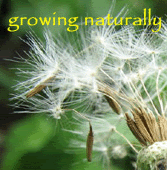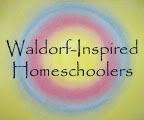
Monday, January 26, 2009
Small Spaces & Waldorf

Posted by
Kristie Karima Burns, MH, ND
at
6:47 PM
4
comments
![]()
Labels: Organization, Waldorf Toys
Wednesday, January 21, 2009
Reading and Writing in Waldorf Education
This can now be found at www.BEarthBLOG.com
Posted by
Kristie Karima Burns, MH, ND
at
10:37 AM
0
comments
![]()
Labels: Language, Main Lesson, NEW BLOG, Reading, Second Grade, Writing
Sunday, January 11, 2009
Science Through Herbs & Healing
Dear Members,
For Sunday Sharing I would like to share a curriculum I have had available for some time but have not had listed on the main EarthSchooling website. It has been tucked away at the new (and thus not many visitors yet) www.TheNaturalLivingChannel.com for some months now so I am trying to get the word out to more people. I have now placed descriptions about this curriclum on the Earthschooling site at:
Kids Can Heal
These classes provide you and your child with a unique way to explore science. I want to share two reasons why this curriculum is so close to my heart:
1. I was never interested in science until I started studying herbs and natural healing. I was always an A student, and did well in class but I always thought of science as a chore until I was given an opportunity to study it in a new way - through herbs, energy healing, iridology, reflexology, health, natural living and more.
2. One reason I teach my children at home is because I feel that the school system leaves out a lot of important scientific facts and information. There is an entire field of science that has just emerged as legitimate science in the past ten years (see the book "The Field" by Lynne McTaggart") but the schools are still teaching our understanding of science from 10-20 years ago and leaving out a lot of the new science!
These lesson blocks help you to explore these areas with your children and to provide more opportunities for them to become interested in science.
I would like to share with you a wonderful poem/excerpt by Sigurd Olson:
Listening Point
While we are born with curiosity and wodner and our early years full of the adventure they bring,
I know such inherent joys are often lost,
I also know, that being deep within us,
their latent glow can be fanned to flame again
by awareness and an open mind.
Posted by
Kristie Karima Burns, MH, ND
at
1:57 PM
0
comments
![]()
Labels: Nature Walks, Science
New Waldorf Channel Shows
New Waldorf Channel Shows
Public
Sample for inspiration: Spinning Wool with Stories & Tutorial
at: Spinning Wool
Private or Purchase
(for www.EarthSchooling.com members and members of www.HerbnHome.com forum
You can also purchase these (and support The Waldorf Channel) at: Video Downloads)
18-minute story & tutorial - Spinning Wool
Our Earthschooling & Waldorf Enrichment Day: Part One - Making Bread
Make Your Own Unique Spool-Knitter and How to Use It
Enjoy!
Blessings & Health,
Kristie
Posted by
Kristie Karima Burns, MH, ND
at
1:51 PM
0
comments
![]()
Labels: Crafts, The Waldorf Channel
Friday, January 9, 2009
Counting in Nature
This post can now be found on our new blog at www.BEarthBLOG.com
Posted by
Kristie Karima Burns, MH, ND
at
9:42 AM
2
comments
![]()
Labels: Math Lessons, Nature Walks, NEW BLOG










